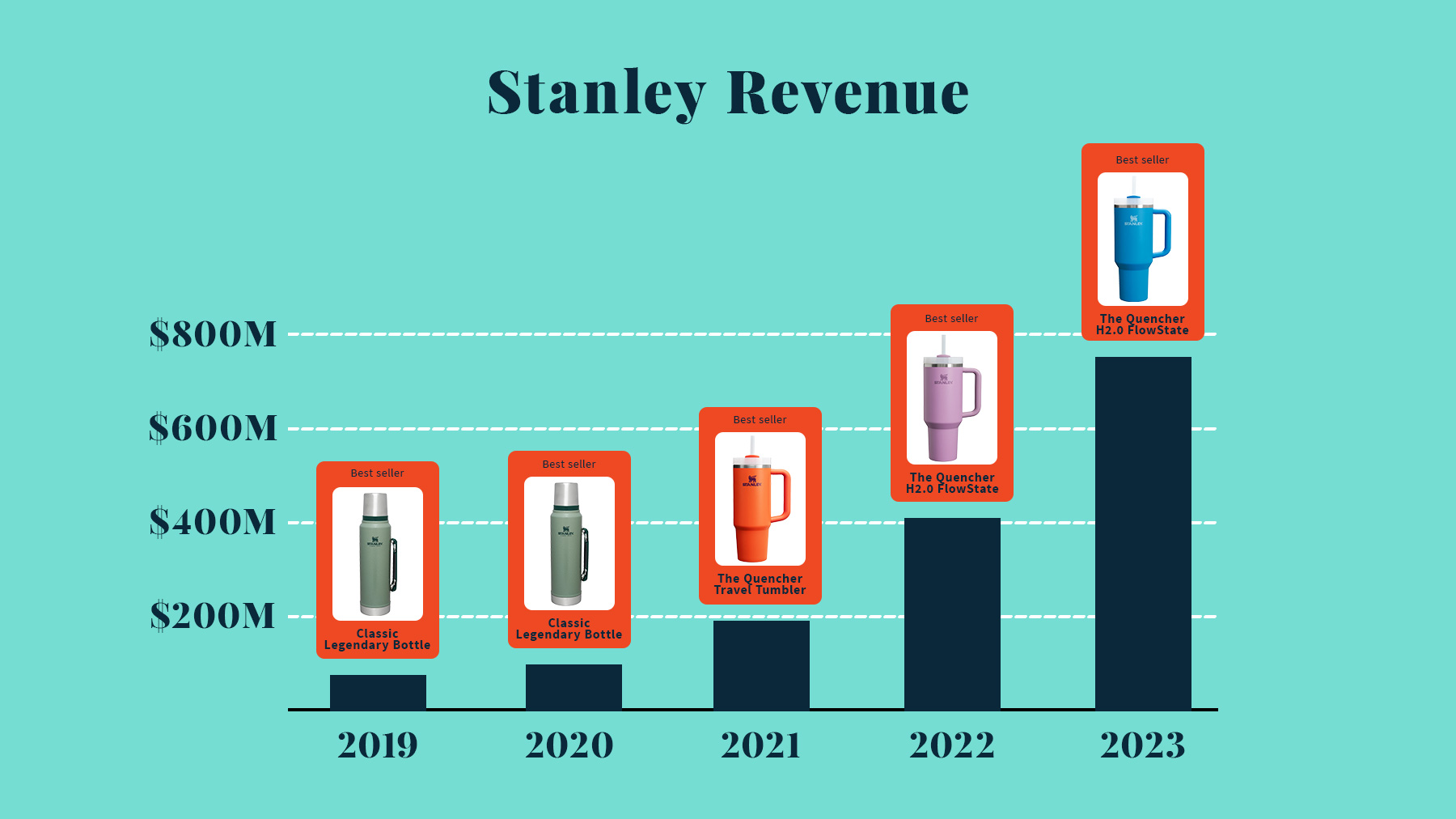Dissecting a Trend: The Rebranding of Stanley Cups

The popularity of Stanley cup products seems to have blown up overnight. However, this popularity growth isn’t just luck; there were a lot of key digital strategies taken by Stanley to push this trend and help keep it in ascendence – including a shift in target market, an entire online refresh, social media collaborations and affiliate programs.
Historically, the Stanley brand has been aimed at a primarily male target market. But as we’ve talked about it in the past, the “mom market” is a huge demographic that holds a lot of influence and buying power.
Making a brand shift like that is a major undertaking. Every area needs consideration: from high level concepts like the branding voice, all the way through to actual physical production. The Stanley brand has been around for over 100 years and has certainly adapted with the times. Starting from a single thermos, the company moved to producing multiple sizes and products, and even branched out into an apparel line. But this move toward a new market seems to have pushed them into the internet viral status.
That shift in audience also shows up in the form of a website rebrand. If you looked at Stanley’s website just 2 years ago, you would have seen a lot of lifestyle pictures of outdoor camping and a “manly” #stanleyness hashtag. Today, the website has more imagery and video with women. It’s a simple yet effective rebrand. It also helped Stanley’s site become a bit more functional and robust, since they were able to add more categories and colors to their arsenal.
2022

2024

Marketing to a new audience and rebranding aren’t exactly new concepts. How did Stanley make its product the “IT” cup we know today? Their social strategy seems to have played the largest part. They started by doing more collaborations and added an affiliate program. For example, Emily Maynard, who is known for her association with shows like “The Bachelor” and “The Bachelorette,” backed the product by purchasing and selling through the site, The Buy Guide. The online buzz was amplified by a viral video from TikTok user @daimarielettering, which showed her car after a fire – with everything destroyed except for her Stanley Quencher. It’s even turned into a collector’s item, with content creators like Chelsea Espejo who has a collection of 47 cups.
All of these marketing strategies helped to create a product that went from the verge of being discontinued to the latest product trend. The success of the Quencher line, in particular, has helped Stanley grow. The graph below, published by CNBC in this article shows its annual revenue climbing from $70 million to more than $750 million in four years – a tenfold growth!

Whether you have a Stanley Quencher or not, you have to recognize it’s made an impact.

